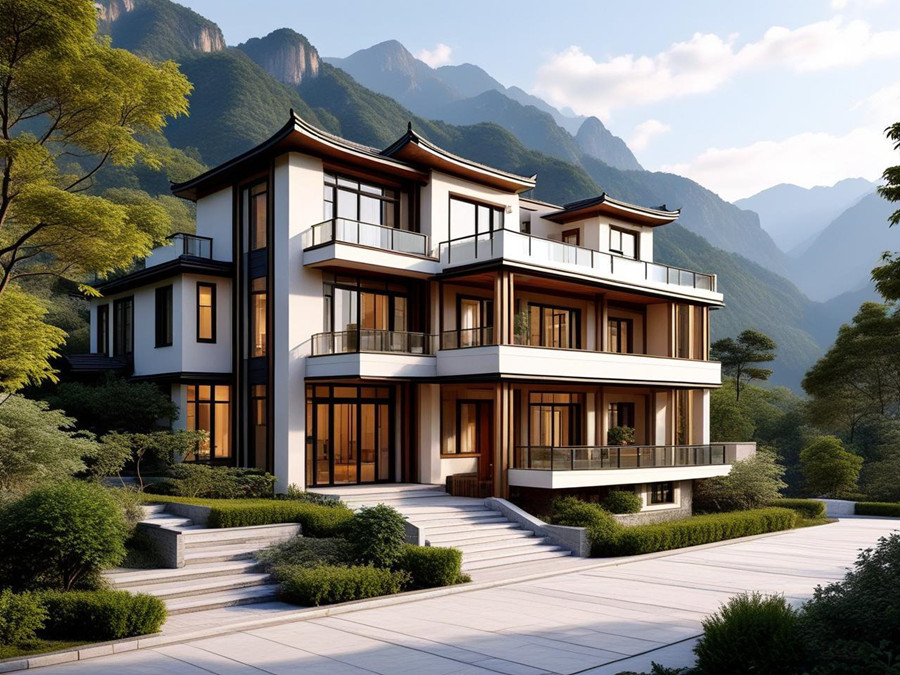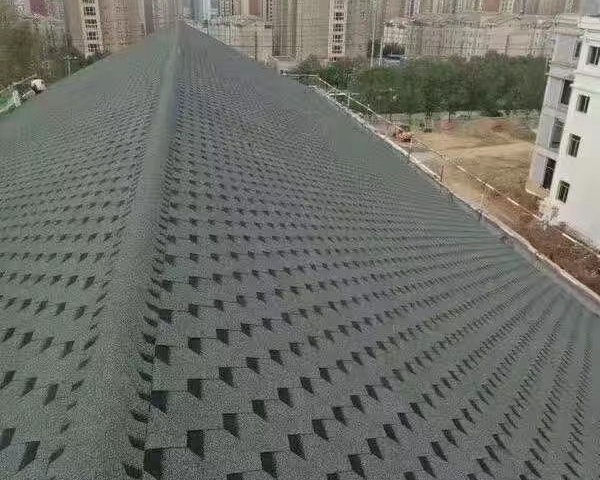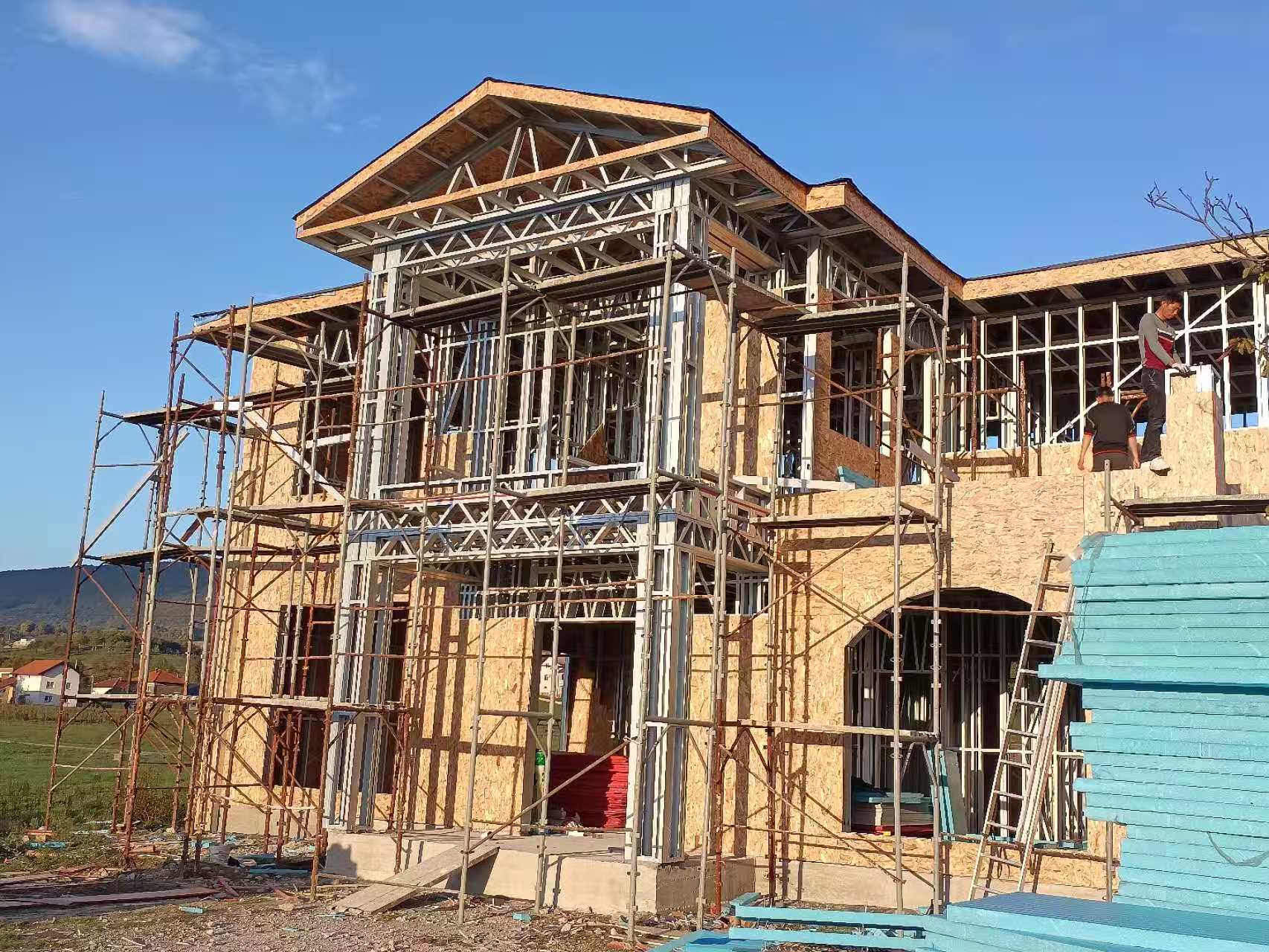As steel structure villas dominate 38% of global prefab housing markets in 2025, thermal insulation has become critical for energy efficiency and comfort. This guide combines material science breakthroughs, AI-driven design optimization, and climate-adaptive solutions to achieve U-values below 0.15 W/m²K.

1. Core Insulation Materials & Performance
A. Advanced Wall Systems
| Material | Thickness | R-Value (m²·K/W) | Cost (¥/㎡) |
| Vacuum Insulation Panels | 30mm | 8.2 | 680 |
| Aerogel Blanket | 50mm | 5.6 | 420 |
| Graphite-Enhanced EPS | 100mm | 4.1 | 185 |
| Phase Change Material | 15mm | Dynamic Thermal Buffer | 550 |
2025 Innovation*: Self-regulating insulation with microencapsulated paraffin wax (melts at 23°C) reduces AC loads by 35% in Shanghai pilot projects.
B. Roof Solutions
•Green Roofs: 150mm soil + drainage layer (U=0.12)
•Cool Roof Coatings: Solar reflectance >0.85 (ASRHAE 2025)
•Hybrid Solar-Insulation: BIPV modules with integrated VIP cores

2. Thermal Bridge Elimination
Critical Areas & Solutions
Steel Studs
•Apply 20mm Aeroflex polyisocyanurate spacers (λ=0.022)
•Use staggered stud framing with 200mm cavity
Connectors
•Replace steel brackets with FRP thermal breaks (ΔT=15°C reduction)
Foundation
•Install 100mm XPS insulation (compressive strength 300kPa) under steel baseplates
Case Study: Hangzhou "EcoSteel" project reduced thermal bridging losses by 91% through BIM heat flow simulations.
3. Smart Insulation Integration
A. IoT Climate Responsiveness
•Adaptive Vapor Barriers: MEMS-controlled permeability (0.1–50 ng/Pa·s·m²)
•Dynamic Air Gaps: Adjustable cavity depths via pneumatic actuators
B. AI-Optimized Layouts
Machine learning algorithms process:
•Local 10-year weather patterns
•Solar azimuth angles
•Occupancy heat profiles
Result: 22% better insulation efficiency than manual designs (2025 ASHRAE data).

4. Regional Adaptation Strategies
| Climate Zone | Priority Solutions |
| Tropical Humid | 1. Reflective radiant barriers + dehumidification membranes |
| Cold Continental | 1. Triple-glazed windows (U=0.8) |
| Arid Desert | 1. Trombe wall with nano-ceramic coating |
2025 Code Requirement*: All steel villas in EU must achieve Energy Class A++ (≤15 kWh/m²/yr).
5. Cost-Benefit Analysis (300㎡ Villa)
| Solution | Initial Cost (¥10k) | 10-Year Savings (¥10k) |
| Basic EPS Insulation | 4.8 | 12.5 |
| Aerogel + Smart Systems | 18.6 | 41.2 |
| Full VIP/PCM Hybrid | 32.4 | 78.9 |
ROI Note: Premium insulation qualifies for China's Carbon Credit Rebates (¥85/m² in 2025).

The team of Ruijie Steel Structure Villa Company
6. Installation Best Practices
Airtightness First
•Achieve ≤0.6 ACH@50Pa via:
•Laser-guided sealing robots
•200mm overlapping vapor barriers
Moisture Management
•Use hygrothermal modeling to prevent condensation (RH<60%)
Fire Safety Synergy
•Combine rock wool insulation (Class A1 fire rating) with intumescent steel coatings
Conclusion: Future-Proofing Steel Villas
2025's insulation solutions transform steel structures into climate-responsive ecosystems. Key trends:
•Self-Healing Insulation: Microcapsules repair 0.5mm cracks autonomously
•Carbon-Negative Materials: Hempcrete composites sequester 12kg CO₂/m²
•Blockchain Certification: Tamper-proof records for insulation performance
With these strategies, modern steel villas can outperform traditional buildings in both thermal comfort and sustainability.